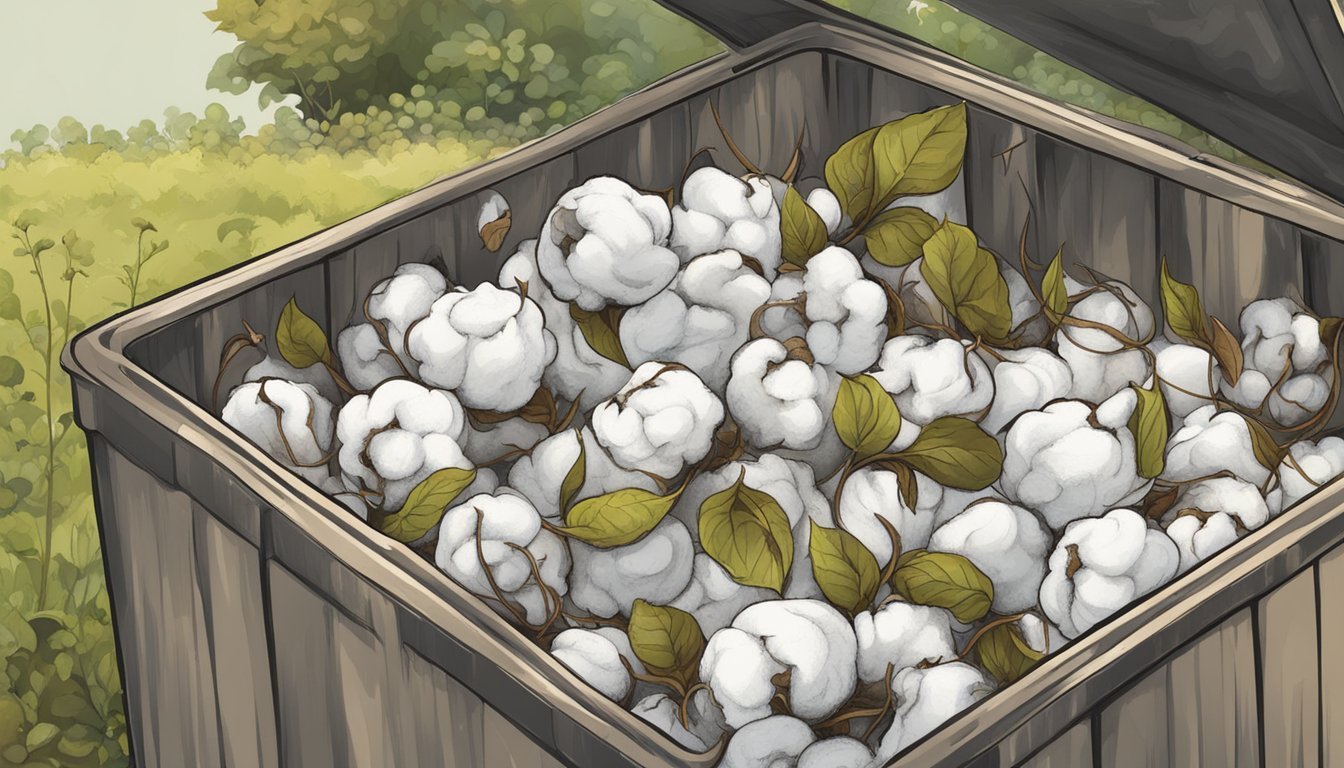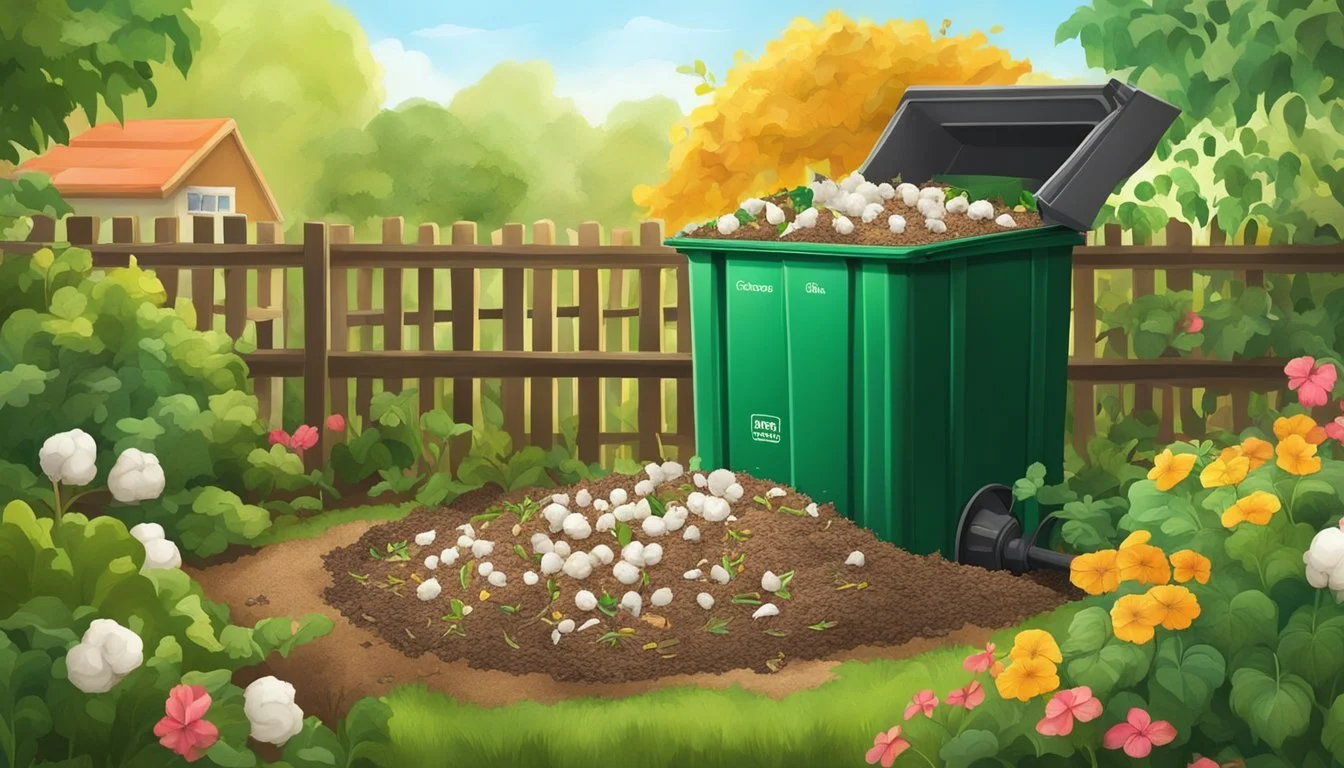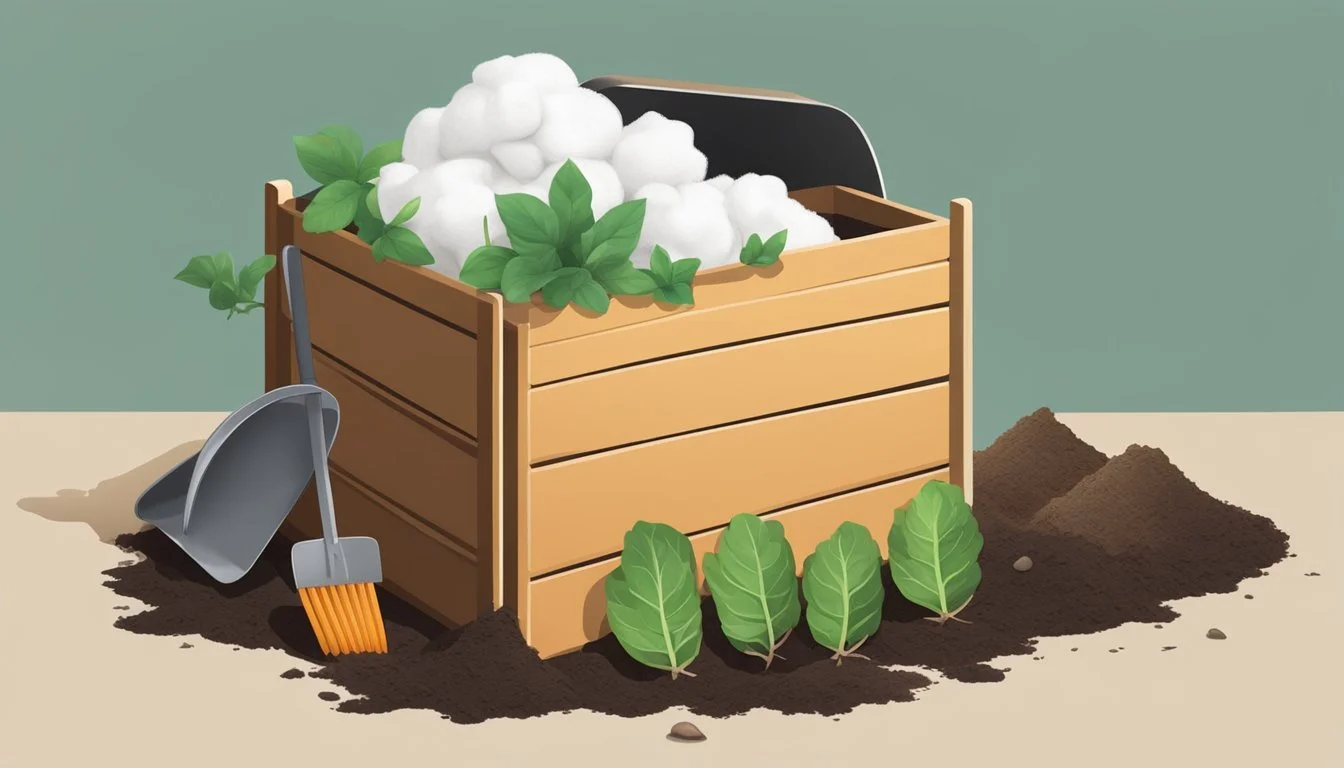Can You Compost Cotton?
Decoding Biodegradability and Composting Practices
The concept of composting has extended beyond just food waste and yard trimmings to encompass a variety of organic materials, including cotton. Cotton, a natural fiber widely used in textiles, can be composted. When it comes to environmental sustainability, composting cotton is an excellent way to minimize landfill waste and turn unused or damaged cotton goods into valuable organic material that can enhance soil quality.
Composting cotton involves breaking down the natural fibers under the right conditions to ensure that they can enrich the soil without any negative impacts. It is essential, however, to consider the state of the cotton material before adding it to a compost pile. Unprocessed, pure cotton can be composted effectively, and it's a common practice to pre-cut or shred the fabric to expedite decomposition. On the other hand, cotton products that have been treated with chemicals or contaminated with harmful pathogens should not be composted to avoid any potential soil contamination.
As the interest in sustainable practices grows, composting cotton has gained popularity both at the household level and within industrial settings. This method of waste management not only contributes to the reduction of the environmental footprint associated with textile waste but also supports the replenishment of soil fertility, benefiting agricultural practices and gardening alike.
Understanding Compost and Cotton
In exploring how cotton factors into composting practices, it is crucial to distinguish the biodegradable qualities of cotton fabric from the non-biodegradable nature of synthetic fibers. The process of composting revolves around the organic decomposition of materials, a key attribute of natural fibers like cotton.
Defining Compost
Compost is the product of the controlled biological decomposition of organic materials, such as food waste and plant matter. The resulting substance is rich in nutrients, making it an excellent soil conditioner. The fundamental components of compost include:
Greens: Nitrogen-rich materials like fruit and vegetable scraps
Browns: Carbon-rich materials such as leaves, twigs, and paper
Compost achieves a beneficial balance when the right mixture of greens and browns undergoes decomposition, facilitated by microorganisms, heat, and moisture.
The Nature of Cotton as a Material
Cotton is a natural fabric derived from the cotton plant, consisting mostly of cellulose. This natural fiber is inherently biodegradable, meaning cotton fabric can break down into natural elements given the right environmental conditions. There are two primary forms of cotton relevant to composting:
Natural Organic Cotton:
Grown without the use of synthetic pesticides or fertilizers.
Easier to decompose due to the absence of harmful chemicals.
Conventional Cotton:
May contain chemical residues which can complicate the composting process.
When considering cotton for compost, unprocessed organic cotton is preferred as it is more compatible with composting methods. The decomposition of cotton in a compost heap contributes to the 'browns', providing essential carbon that balances the nitrogen from the greens. However, fabrics blended with synthetic fibers are not suitable for composting as they do not decompose as naturally occurring materials do.
Composting Cotton Textiles
Composting cotton textiles is a tangible way to reduce waste, contributing to the creation of nutrient-rich soil, while taking advantage of the biodegradability of cotton fibers.
Composting Process for Cotton
Cotton textiles are prime candidates for composting due to their organic nature and cellulose content, which microorganisms in a compost pile readily break down. The steps for composting cotton include:
Preparing the Material: Cut or shred cotton fabric into small pieces to increase the surface area for microbes to attack.
Adding to Compost: Integrate the cotton pieces into your compost pile, ensuring they are mixed with a good balance of green (nitrogen-rich) and brown (carbon-rich) materials.
Factors Affecting Decomposition
Several factors influence the rate at which cotton textiles decompose:
Material Composition: Pure cotton biodegrades more efficiently than blends with synthetic fibers.
Microbial Activity: Adequate moisture and warm temperatures boost microbial activity, facilitating faster breakdown.
Size of Textile Pieces: Smaller pieces decompose more rapidly as they expose more area to the microbes.
Compost Pile Elements and Maintenance
Proper maintenance of your compost pile is crucial for the effective decomposition of cotton textiles:
Balance of Materials: A balanced mix of greens (kitchen scraps, grass clippings) and browns (dry leaves, cotton textiles) helps maintain appropriate nitrogen levels.
Aeration: Regular turning of the pile introduces oxygen, which is vital for aerobic decomposition and microbial health.
Moisture Control: The pile should be damp but not overly soggy to prevent anaerobic conditions that slow down decomposition.
Impact of Non-Cotton Elements on Compostability
When considering the compostability of cotton products, it's crucial to assess the presence of non-cotton elements that can affect the breakdown process, ranging from synthetic blends to various chemicals.
Dyes and Chemicals in Cotton Products
Cotton fabric may contain dyes and chemical finishes that can affect its compostability. Natural dyes from plants or minerals usually decompose without leaving harmful residues, thus they are preferable for composting. In contrast, synthetic dyes and finishes, such as stain protectors or wrinkle-resistant chemicals, may not break down easily and can release toxic substances into the compost, soil, and ultimately groundwater. It is advisable to avoid composting cotton that has been treated with chemical finishes or contains synthetic dyes.
Synthetic Blends and Additives
Cotton products are often blended with synthetic materials, like polyester or PVC ink, to enhance durability and texture. However, these synthetic blends reduce the compostability of the product due to the presence of plastic and other non-cellulose fibers that do not decompose readily. Items such as buttons, snaps, and embellishments made from non-biodegradable materials should be removed before composting. Similarly, synthetic thread used in sewing can also impede the composting process. When in doubt, a rule of thumb is to compost only 100% organic cotton or natural fibers like bamboo, linen, or hemp, free of synthetic additives or harmful contaminants.
Comparing Cotton Composting to Alternatives
When considering the environmental impact of cotton disposal, composting emerges as a sustainable practice, but it is not the only option. Cotton recycling and repurposing stand as significant alternatives, with each having its respective merits and applications.
Insights into Cotton Recycling
Recycling cotton is a process that reduces textile waste by converting old or damaged cotton into new yarn or fabric. Textile mills can mechanically or chemically break down these materials, a method that conserves resources and reduces landfill waste. However, cotton recycling's efficiency is limited by the quality and condition of the cotton feedstock. For instance, cotton blended with synthetic fibers is more challenging to recycle and may not be suitable for all recycling programs.
In some communities, charity shops and specialty recycling bins cater to textile recycling, offering a convenient avenue for individuals to contribute. Additionally, companies may offer take-back programs, which allow consumers to return worn-out cotton products for recycling.
Donation and Repurposing Options
Regarding donation and repurposing, these methods extend the life of cotton textiles and reduce waste. Cotton items in good condition can find a second life when donated to charity shops. These organizations then sell the garments to fund charitable activities or directly provide clothing to those in need. Alternatively, individuals can utilize platforms like eBay to sell or donate their used cotton items, enabling a direct transfer to others who will value and use them.
Repurposing cotton involves creative reuse, where cotton textiles are transformed into new products. Home-based craftspeople frequently repurpose old cotton fabric into quilts, cleaning rags, or other useful items. This method allows for personal expression while also contributing to waste reduction.
Both donation and repurposing not only aid in diverting cotton from landfills but also uphold the principle of reducing waste through resourceful and thoughtful use of existing materials.
Practical Tips for Composting Cotton at Home
Composting cotton at home can reduce waste and create beneficial organic material for gardens. The following tips will guide readers through the process of preparing cotton products for composting and maintaining a healthy compost environment.
Preparation of Cotton Products for Compost
Before adding cotton to a compost pile, it's critical to ensure that the cotton materials are suitable. Consumer products such as cotton clothing, towels, and cotton swabs can be composted if they're made of 100% cotton and do not contain synthetic materials.
Inspect for Synthetics: Check labels and remove any non-cotton components such as buttons, zippers, and polyester threads.
Size Matters: Cut or shred larger items into smaller pieces to speed up the decomposition process.
Pre-Composting Washing: Wash any dyed or treated cotton to remove inks, dyes, or chemicals, provided they are biodegradable and non-toxic.
Maintaining a Balanced Compost Environment
A balanced compost pile requires a mix of "greens" and "browns," materials high in nitrogen and carbon, respectively. Cotton, as an organic waste, acts primarily as a brown.
Ratio for Balance: For optimal decomposition, maintain a ratio of roughly 30:1 of browns to greens.
Aeration: Regularly turn the compost pile to provide oxygen, which is crucial for breaking down the fibers.
Moisture Control: Cotton absorbs moisture; ensure the pile is moist but not waterlogged to support the microbes that create humus.
By following these concrete steps, composters can successfully break down cotton products and contribute to a sustainable cycle of organic waste management.
Environmental Considerations
When one examines the environmental implications of composting cotton, two major aspects emerge: the benefits to the environment by enhancing the sustainability of resource use and the reduction of environmental pollution by diverting waste from landfills.
Environmental Benefits of Composting Cotton
Composting cotton contributes significantly to sustainable waste management. Through the process of breaking down cotton in a compost heap, nutrients return to the soil, enriching it and thus providing benefits for plant growth. This nutrient cycling mirrors nature’s own processes, reduces the need for synthetic fertilizers, and supports organic agriculture.
List of Benefits:
Reduces waste: By composting cotton, the volume of waste sent to landfills is notably lessened.
Decreases greenhouse gas emissions: When cotton decomposes anaerobically in landfills, it produces methane, a potent greenhouse gas. Composting it aerobically reduces these emissions.
Reducing Environmental Pollution
The practice of composting cotton also addresses the critical issue of environmental pollution. Every year, substantial amounts of textile waste contribute to landfill overcrowding. By diverting cotton fabric from landfills and making it a part of the composting process, one can significantly reduce the environmental footprint. Moreover, composting decreases the reliance on chemical-laden fertilizers, which are often responsible for soil and water pollution.
Key Pollutants Reduced:
Chemical fertilizers: Compost provides a natural alternative to chemical fertilizers, thus preventing pollutants from entering ecosystems.
Textile waste: Cotton fabric in landfills can leach dyes and chemicals; composting cotton circumvents this source of pollution.
Conclusion
Composting cotton fabric is both feasible and beneficial for the environment. Cotton, being a natural plant fiber, decomposes, and can become a nutrient-rich addition to garden soil. It’s important to ensure that the cotton is 100% natural, as blends with synthetic fibers will not decompose effectively. For gardeners looking to enrich their compost, cotton products can contribute to the diversity of materials which in turn supports soil health and plant growth.
When adding cotton to the compost, one should follow these guidelines:
Cut or tear the fabric into small pieces to accelerate breakdown.
Avoid composting cotton that has been in contact with harmful chemicals.
Ensure a balanced moisture level; cotton should not be too wet or too dry.
Aim for a higher temperature to promote faster decomposition.
For those concerned with waste reduction, incorporating cotton into a composting strategy can lead to less reliance on landfills. Consumer products made from cotton, such as clothing, towels, and even cotton swabs (if not contaminated with chemicals), can find a second life within compost. By actively making this judgment call, individuals support a circular economy and enhance the organic content of their garden soil, ultimately fostering healthier ecosystems.
In sum, composting cotton is a sound practice that aligns with sustainable living and gardening principles. It turns waste into a resource, thereby closing the loop in the lifecycle of cotton products.





